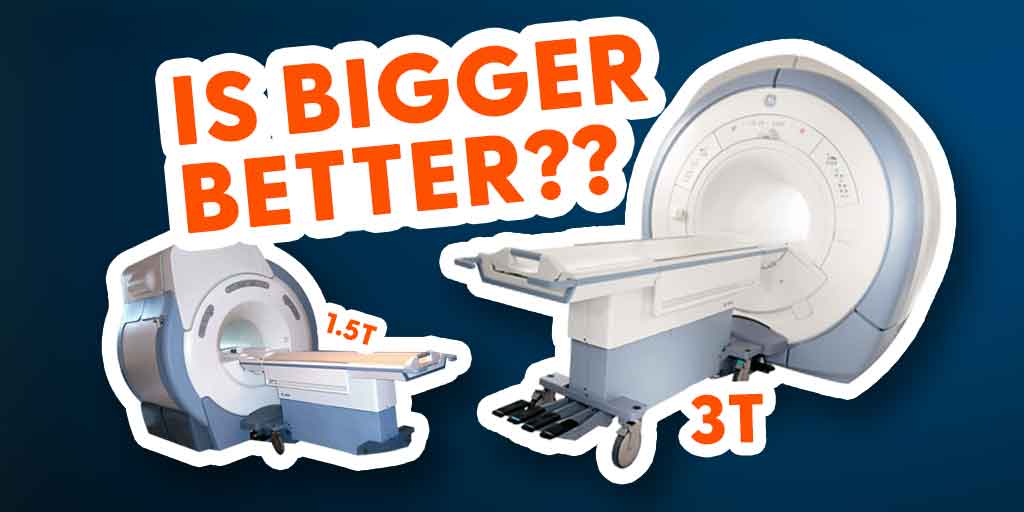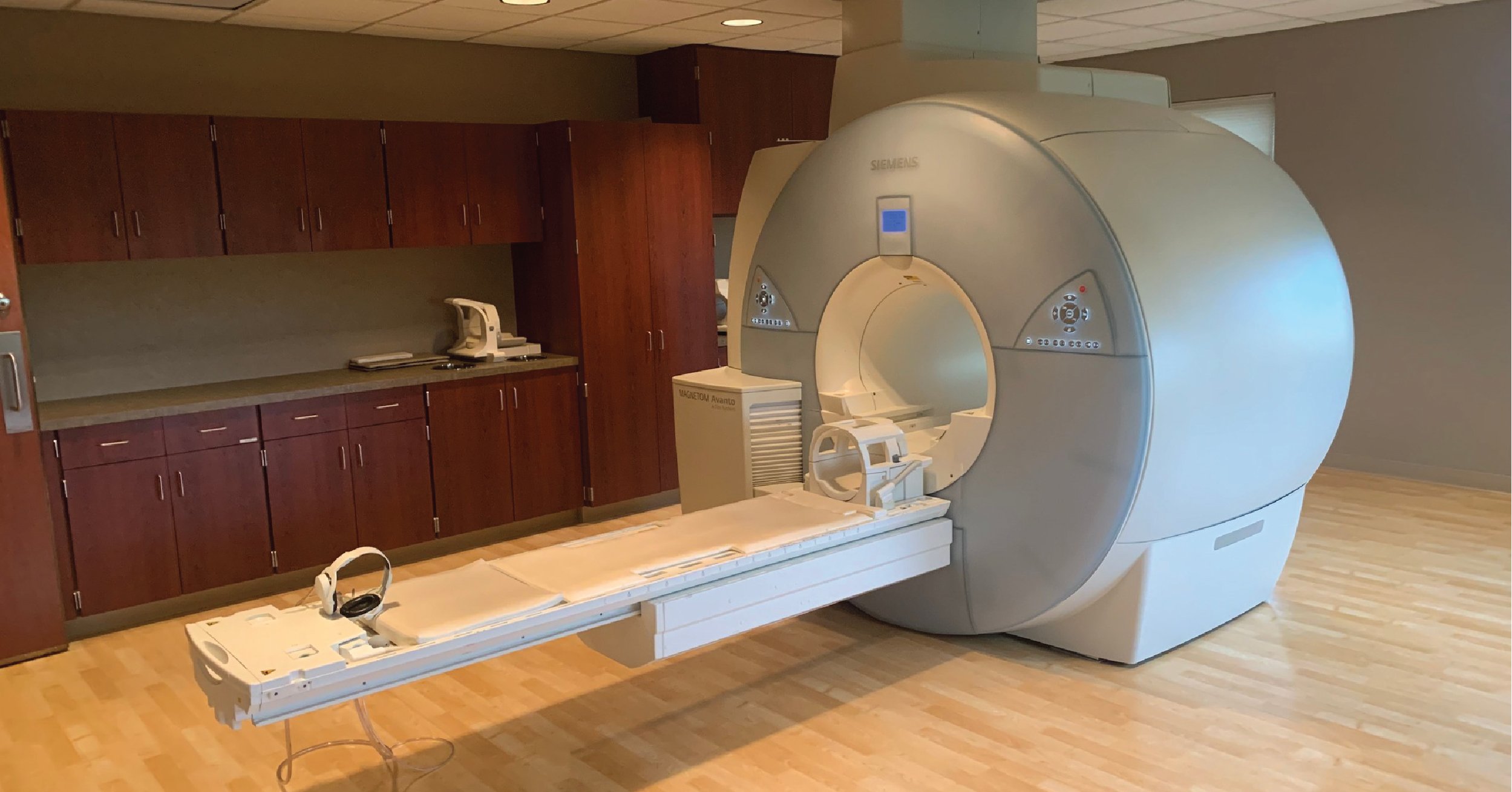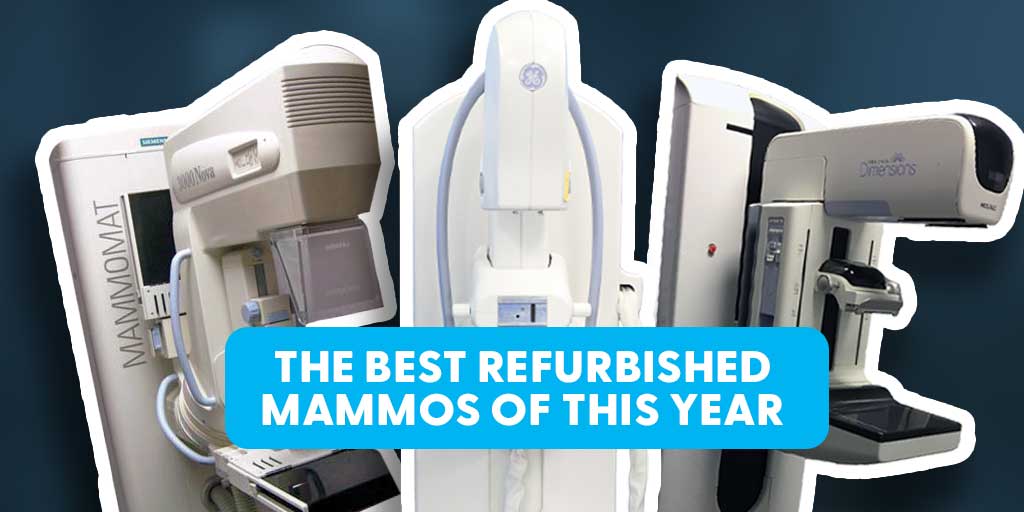
Information on the differences between 1.5T and 3T MRIs can be difficult to find. Our buyers often ask us, "Is a 3T MRI twice as good as a 1.5T MRI?" or, "Is it worth paying more for faster scans or better images?" or, "What kind of room do I need for a 3T?"
These are great questions and after helping thousands of facilities plan MRI installations, we've seen firsthand how choosing the right magnet strength can save money, improve workflow, and even make patient experiences better.
So let's walk through the real-world differences between 1.5T and 3T systems so you can make the ebst choice for your needs and budget."
- What’s the Difference Between a 1.5T and 3T MRI?
- 1.5T MRI: The Reliable Workhorse
- 3T: For Detail-Oriented and High-Volume Work
- Speed and Patient Throughput
- Cost, Availability, and Reimbursement
- MRI Suite Size
- 1.5T vs 3T MRI Questions
- Final MRI Resources
FREE Project Planning Checklist
A step-by-step guide for successfully bringing a new MRI into your facility.
Save yourself months of MRI project delays, headaches and surprises by knowing exactly what to prepare for.
1.5T MRI: The Reliable Workhorse
A 1.5T MRI is still the most commonly used magnet strength today. In fact, it accounts for the vast majority of MRI scans worldwide.
Many physicians prefer 1.5T for its versatility, availability, and cost-efficiency. It’s especially effective for general imaging, musculoskeletal studies, cardiac imaging, and neuro scans.
Why 1.5T Might Be Right for You:
-
Easily handles routine, whole-body imaging
-
Readily available on the secondary market
-
More affordable to purchase, install, and service
-
Compatible with advanced coil and software upgrades
Block Imaging’s Top Selling 1.5T MRIs of 2025
Take a look at our Siemens models comparisons and our GE models comparisons for a closer examination of the differences within each brand.
- Siemens 1.5T Avanto MRI
- GE 1.5T EXCITE HDXt MRI
- Siemens 1.5T Essenza MRI
- Siemens 1.5T Espree MRI
- GE 1.5T SIGNA Explorer MRI
- Philips 1.5T Achieva MRI
- GE 1.5T Optima 450W MRI
3T MRI: For Detail-Oriented and High-Volume Work
3T MRIs are often chosen by facilities that specialize in neuro, cardiac, or research imaging. In these scenarios, the highest level of image clarity is needed. These systems are especially good at producing detailed views of:
-
Brain tissue
-
Spine
-
Soft joint tissue
-
Blood vessels
-
Prostate or breast structures
You’ll also see 3T scanners at facilities wanting to stay competitive or match the equipment offered by nearby providers.
Why 3T Might Be Right For You:
-
Higher resolution for complex studies
-
Faster scan times for high-volume workflows
-
Larger bore size (on some models) improves patient comfort
-
Competitive differentiation for specialty practices
Block Imaging’s Top Selling 3T MRIs
At the top of the list is the Siemens 3.0T Verio MRI, which is among the best scanners ever made. Since they are often a rarity on the secondary market, we often recommend the 3.0T Trio TIM MRI as a viable alternative solution. Check out our comparison between these two models here.
- Siemens 3.0T Verio MRI
- GE 3T Discovery MR750 MRI
- GE 3.0T EXCITE HDXt MRI
- Siemens Prisma FIT 3.0T MRI
- Siemens 3.0T Trio TIM MRI
- Siemens 3.0T Skyra MRI
Speed and Patient Throughput
MRI studies are a compromise between scan time and image quality. If your facility performs high volumes of MRI scans, a 3T system might help you shorten scan times without compromising image quality. But even with a 1.5T, enhancements like phased array coils and upgraded software can yield quality images. It just may take a bit longer.
It all depends upon the type of study that’s needed. Both systems will get you where you need to go, but before you buy one or the other, it’s important to assess how quickly you actually need to get there.
In short:
-
If throughput is a top concern, 3T offers faster acquisition times
-
If your scan types are routine, a well-optimized 1.5T still gets the job done
Cost, Availability, and Reimbursement
Here’s where the numbers come in.
-
Price: 3T systems typically cost 25–50% more than comparable 1.5T units.
-
Install/Service: 3T units require more specialized service and shielding—raising install and maintenance costs.
-
Reimbursement: Regardless of magnet strength, reimbursement is generally the same for a given procedure code.
-
Availability: 1.5T scanners are much more common on the secondary market. 3T systems can be harder to source, especially if you're looking for a specific model or feature set.
So, while 3T may offer more power, it comes with a higher price tag and fewer unit options.
MRI Suite Size
3T MRIs often require more space but that doesn’t mean you can’t fit one into a typical imaging suite. In most cases, modern active shielding keeps the magnetic field (especially the 5-gauss line) contained within standard room sizes.
Still, before installation, we recommend performing basic site testing to verify safety and compliance.
The rooms in the MRI suite include:
- Scan Room: This room is where the magnet and the table are. It's where patients are scanned, hence the name.
- Equipment Room: This space holds the cabinets of electronic equipment that connect to the magnet.
- Control Room: The tech works from this room during a scan. It holds a desk, chair, and computer workstation.
- Changing Room: This room is not required, but it's very common for facilities to add a small changing room for patients. This improves their experience and can also be a helpful place for you to store your QA phantoms, manuals, or other system accessories.
Tip: Want to see a full breakdown of MRI suite layout and construction requirements? Check out our MRI Suite Planning Guide.
If you’re stuck deciding between a 1.5T and 3T MRI, ask yourself:
-
What kind of imaging will I perform most often?
-
Do I need high throughput to serve my volume?
-
Am I focused on specialty studies or routine scans?
-
What’s my available space and installation budget?
-
Can I find a 3T model that fits my timeline and price range?
Final MRI Resources
If your studies are less detailed or your workflow is less hectic, a 1.5T system can serve your needs and save significant cost. These systems are more readily available, as are replacement parts and service engineers to keep them running.
On the other hand, if your work involves specialized studies, short appointment windows, or advanced diagnostics, the image clarity and time savings of a 3T MRI could be worth investing in.
Want to make sure you cover all the technical, financial, and logistical considerations before choosing your MRI?
FREE Project Planning Checklist
A step-by-step guide for successfully bringing a new MRI into your facility.
Save yourself months of MRI project delays, headaches and surprises by knowing exactly what to prepare for.

Steve Rentz
Steve Rentz is the Product Manager for MRI Scanners at Block Imaging. Steve's goal is to earn each customer's trust and business by specifically addressing the needs of their unique project. When Steve is not helping customers with their MRI needs, he enjoys running, swimming, and woodworking.





